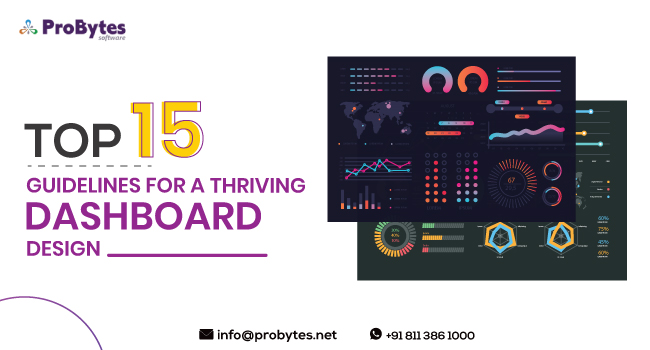Blog Category(283 Blogs)
Many finance companies nowadays depend on Big Data and Data Science. But which programming language do they use to make use of this cutting edge tech?
If you’ve already considered advancing your career in these fields, you too will surely come across this question.
Most common programming languages that are used in the financial data analysis are R and Python.
But how would you know which one is better? Thus, we’ll look into both of these programming languages and learn their characteristics in detail.
Why Learn Python?
Python is a popular programming language which can be used in all types of the field including data science.
Learning Python can be very beneficial for data scientist and even if they aren’t from the technical background they can easily grasp Python’s basics and use it as per their requirement.
Features of Python
- Python is open-source language and is also available for free to programmers. From the companies perspective, it can be a great option to save cost.
- Programmers who are already familiar with object-oriented programming languages like Java, C++ or Ruby can easily grasp Python. For programmers, it is easy to learn and easy to code.
- Since finance involves complex data sets and functions, Python uses less coding and intense debugging feature with which data scientists can easily step into the analysis
- Python has the potential to perform and develop high-quality application and services related to web or desktop.
- Python involves short syntaxes which make it clearer and easier for data scientists to understand and write.
- Many companies use Python for development of data-centric applications and scientific computation which is associated with the financial
- Python offers packages and frameworks like Pandas which is very useful for data analysis purpose. Furthermore, RPy2 package offers almost the same functionalities as R with high performance.
- Python also uses packages such as Matplotlib and IPython for plotting graphs and visualization which helps in finance’s statistics and analytics.
Why Learn R?
When data scientists need to do data analysis, learning R programming language will be very beneficial for them as there is no other programming language which provides essential functions that can be used in the statistical computation.
It provides data scientists with well-designed plots including mathematical functions wherever needed.
Features of R
- R is an open-source programming language that means it is freely available. A data scientist can easily install it, upgrade it and use it as per their need.
- R supports compatibility with different platforms and can easily run across every operating system. Furthermore, it will also let you import data sheets from other tools such as Microsoft Excel.
- R is a scripting language which allows you to use it intensively for resource simulations on high-performance computers. Also, it helps in handling big and complex data sets.
- R allows you to perform specialized statistical functions with its new statistical development packages. It also offers over 2000 libraries which covers every statistical functional area of finance.
- R language consists of graph-plot packages which will let you perform plotting effortlessly. Furthermore, it also supports different tools like LaTeX which helps in exporting graphical and statistical output from R to word documents.
- R has a rich and large community which can help you to overcome any difficult analytic task. Pre-written packages and online support from these communities will make your data analysis job easier.
- As finance requires more complex and deep functioning of statistical computation, R offers packages that can make statistics easy for data scientists. It can also be used for research purpose in data analysis.
- If you are from a technical background and has experience in a programming language, it becomes even easier to grasp advanced concepts in R once you have learned the basics.
Choosing The Appropriate Programming Language For Finance
Use in Data Science
Python: Python is generally used in data science when there are few web apps which need to be integrated with data analysis or there is few statistics code which needs to be embodied with the application.
R: R is mostly used for statistical and analytical tasks and needs a standalone server to perform data analysis. When we look from data analysis perspective, clearly R is the winner but now many users are switching from R to Python as it provides versatile functionalities in data science and big data fields.
Also Read : 7 Kick-ass Games Built Using Python Language
Data Handling Capabilities
Python: Python did have issues in the past for data handling but this issue has been improved significantly. To make Python usable for data analysis packages like NumPy and Pandas are required.
R: For basic data analysis, R can be used without installing packages. For huge data sets, packages like data.table or dplyr are required in R.
Popularity
Python: Python has a significant amount of popularity as compared to R. As Python has more opportunities in career, many programmers recommend Python as general purpose language. Developers to Data scientists Python can be used for a variety of applications.
R: R is mostly used by data scientists as it is used only for data analysis. But compared to Python, it has been outraced. As finance involves the calculation and analysis of data R would be best for you.
Market Usability
Python: Python is being used in almost all industries for data science, machine learning, and developing. Companies such as Facebook, Google and YouTube are leveraging Python.
R: R is being used in data analysis and currently has over 2 million users. It has become a popular tool for data science and is a right tool to use against complex statistics of finance.
Community
Python: If you want to seek help for data analysis you will always find a huge amount of queries and solutions from Python’s community.
R: Finding queries and solution related to data analysis and statistics issues will be found easily in R’s community.
Also Read : How to Build a Web Application Using Python
Conclusion
Choosing a better one might be tough as both provide the same features for data analytics.
So if you are a beginner and new to the field of data science, the learning phase would be the same if you chose either one of them.
If you are from statistical or analytical background and wants to stick with field of data analysis right option for you to choose would be R but if you are considering yourself to expand your knowledge from data analysis to other, Python would be best suited for you but choosing an appropriate language totally depends on you and your goal.

 Python
Python Magento
Magento Odoo
Odoo How To
How To How Much
How Much Yii Development
Yii Development Core PHP
Core PHP Prestashop
Prestashop Latest News
Latest News Education
Education Web Design
Web Design Business
Business Ecommerce
Ecommerce Travel
Travel Banking and Finance
Banking and Finance Web Development
Web Development Ruby On Rails
Ruby On Rails Joomla Development
Joomla Development Ecommerce
Ecommerce Magento Development Services
Magento Development Services Hire a Developer
Hire a Developer Web Crawling Services
Web Crawling Services














